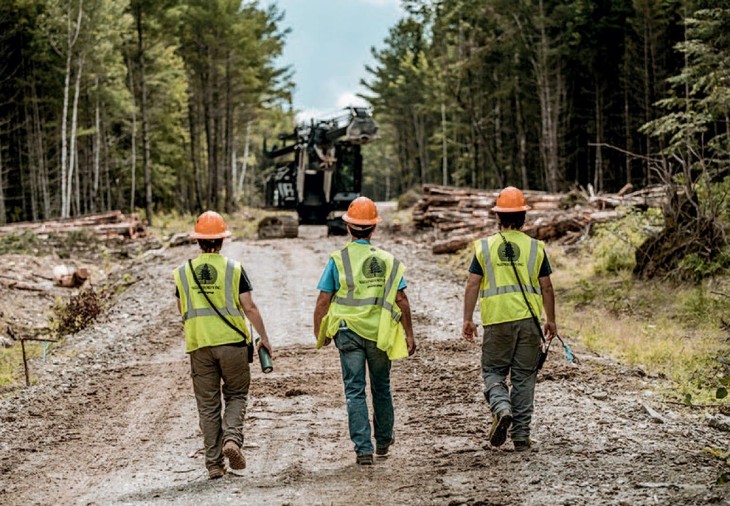
Sometimes we’ll need to make decisions about what’s best for the land, and it is not always easy to do the right thing. Remember, we’re not selling the wood. We’re selling our work, our professionalism, our expertise. — Donald Burr, program and lead instructor, Mechanized Logging Operations and Forest Trucking (MLOFT) program
Photo by Garrick Hoffman.On page 50 of this issue, you’ll find an article by Jack Beaudoin describing an intensive training program that prepares young Mainers – some only weeks out of high school – for highly skilled positions in trucking and logging. Beaudoin’s article reflects proactive efforts to reduce barriers to entry for new workers in an industry that’s facing serious recruitment challenges.
I’m pleased that we’re able to publish the article, with accompanying photos by Garrick Hoffman and an audio segment produced by Tim Ouillette, and I’m grateful to the Maine Timberlands Charitable Trust for agreeing to support this work. That said, I expect some negative feedback from our community. Whenever Northern Woodlands includes coverage of mechanized logging, we hear from readers who question how this topic fits thematically with other content in the magazine.
I understand this reaction. I’m in my happy place reading Anna Morris’s piece on how to make a screech owl box, page 18, and looking through images of kids helping to hang sap buckets on sugar maples, page 60. Conversely, it’s jarring to watch big machines cut, lift, and strip trees of their limbs and bark as if they were so many stalks of corn.
Yet this kind of logging is the most prevalent form of timber harvesting in the Northeast, and it’s essential to keeping our regional wood production flowing. The sustainability of its workforce matters environmentally – separate from concerns about jobs or rural economies – because regionally produced wood is less carbon costly than most other options.
That doesn’t mean anything goes, or that there’s no room for change or criticism. But the continuing availability of professionals who know how to cut, haul, and process wood is an assumption that underlies many of the articles about forest management that appear in these pages, and it’s critical to the region’s climate change resilience. Check out, for example, the second note of Catherine Schmitt’s Discoveries column on page 68. As described in that column, research suggests that even slightly greater hurricane wind speeds, which are all but inevitable as the climate continues to warm, will result in much greater damage to northeastern forests. The conclusion from that research? In the future, southern New England will need more salvage capacity – in other words, loggers, mill operators, and other skilled workers – to prevent storm-damaged forests from becoming sources of carbon emissions.
It’s all connected, and so complicated. And fascinating, too, because there’s always so much more to learn.

